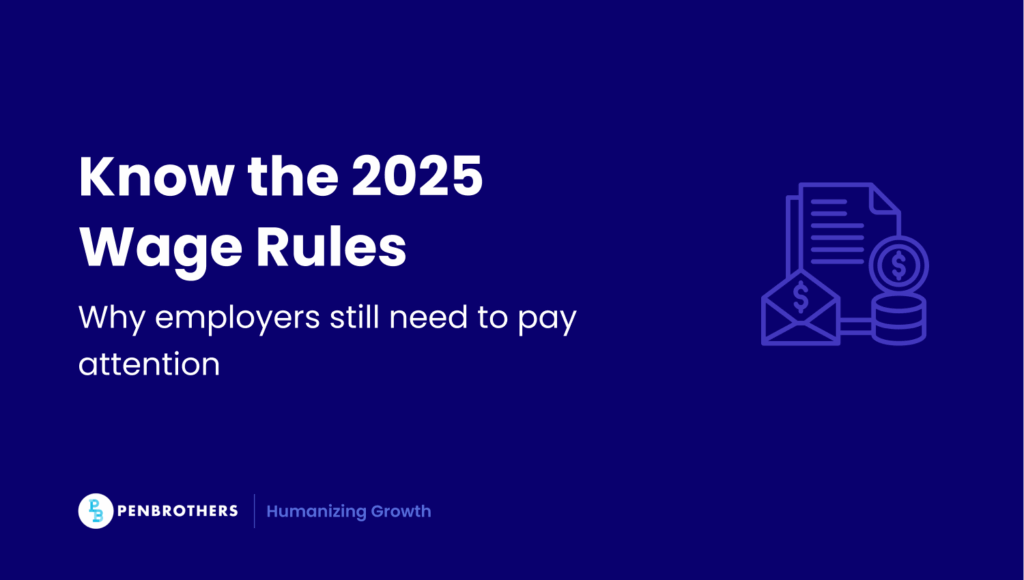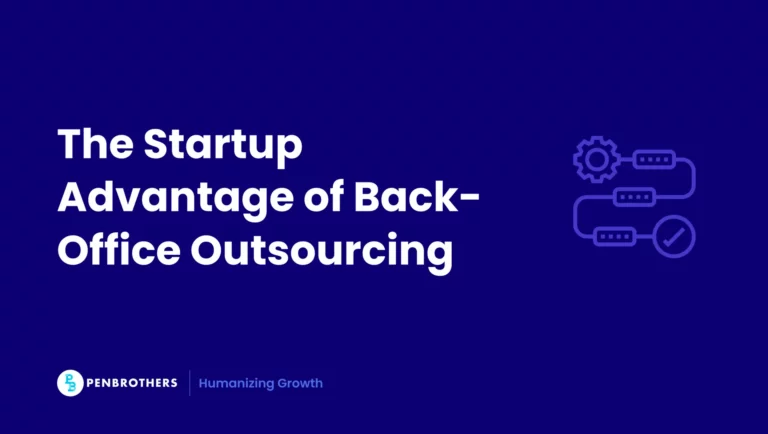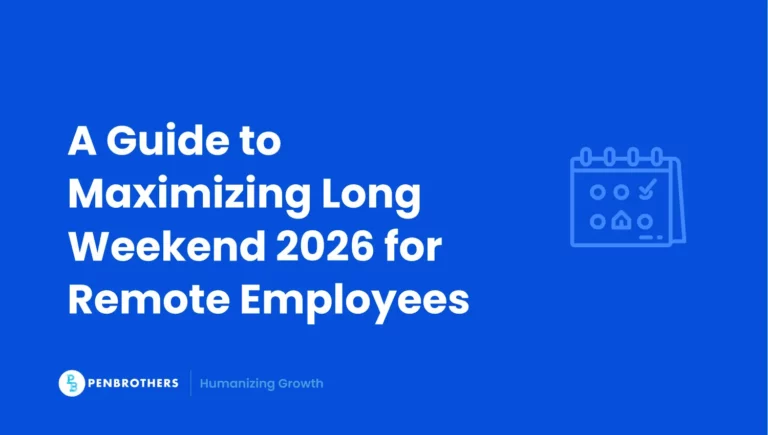Despite mounting political and economic pressure, the federal minimum wage has remained unchanged at $7.25 per hour since 2009. That static number continues to shape compliance, cost planning, and talent strategy for U.S. employers—especially those operating across multiple states.
While 29 states and dozens of cities have established higher minimums, 21 states still adhere to the federal baseline as of 2025. This wage floor remains a touchpoint for national labor policy, even as momentum builds to raise it.
Key Takeaways
- The Federal Rate is a Floor, Not the Standard Rule: While the U.S. federal minimum wage has remained unchanged at $7.25 per hour since 2009, this rate only serves as a baseline. The majority of states (29) and dozens of cities have implemented their own, higher minimum wages.
- Employers Must Pay the Highest Applicable Rate: This is a critical compliance point for all businesses. You are legally required to pay your employees the highest minimum wage that applies to their work location, whether that is the federal, state, or city rate.
- Different Rules Apply to Different Types of Workers: The Fair Labor Standards Act (FLSA) allows for specific exceptions to the standard minimum wage. These include different, lower wage floors for certain tipped employees, young workers under the age of 20 for their first 90 days, and workers with disabilities, all of which are subject to strict regulations.
- Compliance Requires Proactive and Continuous Monitoring: Given the dynamic nature of state and local wage laws, compliance is not a one-time task. Employers, especially those operating in multiple states, must continuously monitor legislative changes, conduct regular audits of their pay structures, and leverage technology to ensure they are meeting all legal requirements and avoiding steep penalties.
What Is the U.S. Minimum Wage?
The minimum wage is the lowest hourly pay that employers can legally offer. It was designed to prevent exploitation in the labor market, particularly among entry-level and hourly workers.
Though $7.25 is the federal rate, the real picture is far more complex. In hospitality and service roles, for example, many workers earn a lower base wage and depend on tips to meet legal minimums. This tipping structure is far more entrenched in the U.S. than in other economies like the UK or Australia, where higher base pay reduces reliance on gratuities.
To put things in perspective, here’s how the U.S. compares globally as of early 2025:
| Country | Minimum Wage Per Hour | Equivalent in USD* |
| Canada | CAD 17.30 | USD 12.63 |
| UK | GBP 12.21 | USD 15.26 |
| France | EUR 11.65 | USD 12.58 |
| Germany | EUR 12.82 | USD 13.85 |
| Italy | No national minimum wage | None |
| Australia | AUD 24.10 | USD 15.91 |
| New Zealand | NZD 23.15 | USD 13.89 |
| South Africa | ZAR 28.58 | USD 1.54 |
| Philippines | PHP 645 | USD 1.45 |
With the exception of Italy, where minimum wage is governed by sectoral agreements rather than national law, most advanced economies have set higher wage floors than the U.S. This contrast matters especially for global companies trying to maintain parity across markets or recruit internationally.
2025 Federal Minimum Wage Landscape: What’s Changing?
Movements like Fight for $15 have pushed the national conversation forward. And it’s working. Several states and cities have aligned with the $15/hour benchmark, even as Congress stalls on a federal update.
What should employers watch for in 2025?
- Ongoing federal proposals: While none have passed, momentum is building. The Raise the Wage Act of 2023 proposed a phased increase to $17 by 2028. CBO analysis projects that raising the federal minimum wage to $15 by 2025 would affect 27 million workers.
- State and city legislation: Look out for mid-year adjustments.
- Political shifts: The 2024 election cycle saw wage policy become a major campaign issue.
Employers can no longer afford to treat the federal wage as the only compliance target.
Federal vs. State Minimum Wage: Who Sets the Rules?
The federal minimum wage, set under the Fair Labor Standards Act (FLSA), currently holds steady at $7.25 per hour. States, however, can set their own rates—and many do. Employers must follow whichever rate is higher: federal, state, or municipal.
| State | Minimum Wage | Effective Date |
| California | $16.50 | January 1, 2025 |
| New York | $16.50 (NYC, Long Island, Westchester); $15.50 elsewhere | January 1, 2025 |
| Florida | $14.00 | September 30, 2025 |
| Texas | $7.25 | Based on federal rate |
| Washington | $16.66 | January 1, 2025 |
These state-level increases reflect regional cost-of-living adjustments and local labor market pressures. Employers operating across multiple states must closely monitor these variations or risk non-compliance. The National Conference of State Legislatures provides a real-time tracker for wage changes by state. Source
Wage Variations by Worker Type
Not all employees are subject to the same wage floor. The Fair Labor Standards Act (FLSA) allows several exceptions to the federal minimum wage—each with strict rules and documentation requirements.
- Tipped Employees
Employers may pay as little as $2.13 per hour in direct wages if the employee’s tips bring total earnings up to at least $7.25 per hour. However, several states mandate a higher tipped minimum wage or disallow the tip credit altogether. - Young Workers (Under 20 Years Old)
A special youth minimum wage of $4.25 per hour may be applied during the employee’s first 90 consecutive calendar days of employment. After that, the standard minimum wage applies. - Trainees and New Hires
Some states permit lower pay rates for newly hired employees during a defined training period—although this is less common and often subject to specific program guidelines. - Workers with Disabilities
Under Section 14(c) of the FLSA, certain employees with disabilities may be paid less than the standard minimum wage, provided the employer holds a certificate from the Department of Labor. This provision is meant to increase access to employment opportunities, but it has faced growing criticism and reform efforts in recent years.
These exceptions are highly regulated. Failing to classify employees correctly or track earnings accurately can expose employers to legal risks, fines, and reputational damage—especially in multi-state or high-turnover environments.
Pros and Cons of Raising the Federal Minimum Wage
The debate is intense, and both sides have a case:
Potential Benefits
- Poverty Reduction
A higher wage floor can lift millions above the poverty line and reduce dependency on public assistance programs. According to the Economic Policy Institute, a $15 federal minimum wage could increase earnings for 32 million workers, significantly benefiting low-income households. - Consumer Spending Growth
More money in workers’ pockets often means increased household spending, which in turn stimulates demand for goods and services—especially in local economies. - Talent Retention & Productivity
Fair pay doesn’t just retain workers—it often inspires better performance and loyalty. Employers may see reduced turnover, fewer absences, and a more engaged workforce. - Closing the Income Gap
Raising the wage floor can help narrow the wage disparity between low-income earners and higher earners, contributing to a more balanced economic structure.
Possible Drawbacks
- Cost Burden on Employers
For small and mid-sized businesses, higher wage obligations can be difficult to absorb, especially in low-margin industries. This may trigger hiring freezes or budget cuts elsewhere. - Job Loss or Automation
Employers faced with rising labor costs might look to automation or outsourcing as cost-control measures—particularly for repetitive, low-skill jobs. - Reduced Entry-Level Opportunities
A higher wage floor could lead businesses to become more selective, favoring experienced applicants and sidelining young or first-time workers. - Pricing Pressure
To offset higher payroll expenses, companies may raise the prices of products or services, which can contribute to inflationary trends.
Employers must weigh these implications in the context of their own operations. Discover the pros and cons of offshoring if you’re balancing wage decisions with business growth.
Implications for Employers: From Payroll to PR
Minimum wage decisions don’t just affect the bottom line—they influence brand reputation and talent acquisition.
Here’s what’s at stake:
- Labor Cost Planning
Multi-state employers must account for varied wage laws across jurisdictions. This includes building flexibility into payroll models and forecasting wage escalations tied to inflation or legislation. - Talent Acquisition and Retention
In high-wage cities or states, offering the bare minimum won’t cut it. Competitive pay remains a core differentiator for skilled workers, especially in retail, logistics, and customer service sectors. - Reputation and Employer Branding
Consumers—and especially younger job seekers—are paying attention to how companies treat their frontline staff. Wages are now part of the broader ESG conversation, tied to ethics, equity, and inclusion. - Legal Risk and Compliance
Failing to meet local wage requirements can trigger hefty fines, backpay obligations, and reputational damage. As labor laws evolve, companies need proactive systems to track and implement changes.
Compliance Must-Knows for 2025
Penalties are steep: up to $10,000 per FLSA violation. For employers navigating multiple jurisdictions, complexity is the real threat. Here’s how to stay ahead:
- Monitor Legislative Changes
Wage laws shift fast—sometimes mid-year—and vary widely between federal, state, and even city levels. Subscribing to official updates and industry alerts should be standard protocol. - Audit Compensation Structures
Don’t assume you’re compliant. Conduct regular internal reviews across all job roles and locations. Pay particular attention to roles paid under exceptions like tipped, youth, or trainee classifications. - Leverage Compliance Tech
Manual tracking won’t scale. Use payroll tools that automatically sync with updated wage laws and validate payments across geographies. - Educate Cross-Functional Teams
Compliance isn’t just HR’s job. Finance, operations, and line managers all play a role in enforcing fair pay practices and catching risk exposures early.
At Penbrothers, we help U.S. companies simplify payroll for offshore teams—with full wage compliance included. Explore how our offshore development center model ensures global compliance.
Final Thoughts
Inaction is not a strategy. Wage compliance in 2025 requires vigilance, agility, and access to the right expertise.
Whether you’re hiring locally or expanding offshore, your wage structure speaks volumes. And if your U.S. labor costs are rising fast, consider this: offshore staffing through Penbrothers gives you access to top-tier talent at competitive rates, fully compliant, without the complexity.
Want to know how much talent in the Philippines really costs?
Download the 2025 Philippine Salary Guide to benchmark offshore roles and plan smarter hiring strategies.
Let’s make 2025 the year you stop chasing compliance—and start leading with strategy.
Frequently Asked Questions
The federal minimum wage in 2025 remains at $7.25 per hour. This rate has not been changed since 2009.
You must always pay the higher rate. The law requires employers to adhere to whichever minimum wage—federal, state, or local—provides the greatest benefit to the employee.
No, the Fair Labor Standards Act (FLSA) allows for some exceptions. For example, tipped employees can be paid a lower direct wage if their tips bring their total earnings up to at least the minimum wage. There is also a special, lower “youth minimum wage” for workers under the age of 20 during their first 90 days of employment.
Proponents argue that raising the minimum wage can lead to poverty reduction, an increase in consumer spending which stimulates the economy, better talent retention and productivity for businesses, and a narrowing of the income gap.
Opponents are concerned that a significant increase could create a cost burden for small businesses, potentially leading to job loss or increased automation, a reduction in the number of entry-level job opportunities, and inflationary pressure as companies raise prices to cover higher labor costs.






